
Follows the Lower Deschutes River Corridor and includes surrounding habitat.
COA ID: 148
Ecoregions

Blue Mountains
Located in NE Oregon, the Blue Mountains ecoregion is the largest ecoregion in the state. It provides a diverse complex of mountain ranges, valleys, and plateaus that extend beyond Oregon into the states of Idaho and Washington.
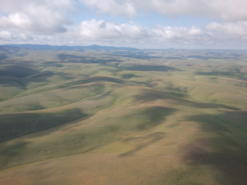
Columbia Plateau
The Columbia Plateau ecoregion was shaped by cataclysmic floods and large deposits of wind-borne silt and sand earlier in its geological history. It is dominated by a rolling landscape of arid lowlands dissected by several important rivers, and extends from the eastern slopes of the Cascades Mountains, south and east from the Columbia River to the Blue Mountains.
Strategy Habitats

Grasslands
Grasslands include a variety of upland grass-dominated habitats, such as upland prairies, coastal bluffs, and montane grasslands.
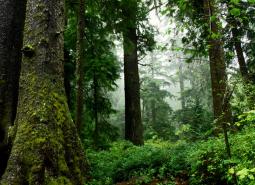
Late Successional Mixed Conifer Forests
Late successional mixed conifer forests provide a multi-layered tree canopy, including large-diameter trees, shade-tolerant tree species in the understory, and a high volume of dead wood, such as snags and logs.

Natural Lakes
Natural lakes are relatively large bodies of freshwater surrounded by land. For the purposes of the Conservation Strategy, natural lakes are defined as standing water bodies larger than 20 acres, including some seasonal lakes.

Ponderosa Pine Woodlands
Ponderosa pine woodlands are dominated by ponderosa pine, but may also have lodgepole pine, western juniper, aspen, western larch, grand fir, Douglas-fir, mountain mahogany, incense cedar, sugar pine, or white fir, depending on ecoregion and site conditions. Their understories are variable combinations of shrubs, herbaceous plants, and grasses.

Flowing Water and Riparian Habitats
Flowing Water and Riparian Habitats include all naturally occurring flowing freshwater streams and rivers throughout Oregon as well as the adjacent riparian habitat.
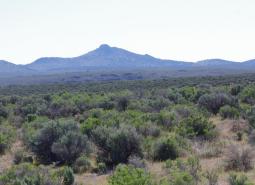
Sagebrush Habitats
Sagebrush habitats include all sagebrush steppe- and shrubland-dominated communities found east of the Cascade Mountains.

Wetlands
Wetlands are covered with water during all or part of the year. Permanently wet habitats include backwater sloughs, oxbow lakes, and marshes, while seasonally wet habitats include seasonal ponds, vernal pools, and wet prairies.
Strategy Species

Black-backed Woodpecker (Modeled Habitat)
Picoides arcticus

Brewer’s Sparrow (Observed)
Spizella breweri breweri

Bull Trout (Documented)
Salvelinus confluentus

Burrowing Owl (Modeled Habitat)
Athene cunicularia hypugaea

California Myotis (Modeled Habitat)
Myotis californicus

Chinook Salmon (Documented)
Oncorhynchus tshawytscha

Common Nighthawk (Observed)
Chordeiles minor

Dalles Mountainsnail (Observed)
Oreohelix variabilis variabilis

Ferruginous Hawk (Observed)
Buteo regalis

Flammulated Owl (Modeled Habitat)
Psiloscops flammeolus

Grasshopper Sparrow (Observed)
Ammodramus savannarum perpallidus

Great Gray Owl (Modeled Habitat)
Strix nebulosa
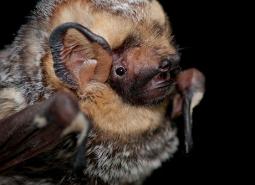
Hoary Bat (Observed)
Lasiurus cinereus

Lewis’s Woodpecker (Observed)
Melanerpes lewis
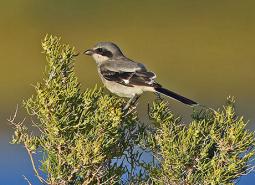
Loggerhead Shrike (Observed)
Lanius ludovicianus

Long-billed Curlew (Modeled Habitat)
Numenius americanus

Long-legged Myotis (Modeled Habitat)
Myotis volans

Northern Sagebrush Lizard (Modeled Habitat)
Sceloporus graciosus graciosus

Olive-sided Flycatcher (Modeled Habitat)
Contopus cooperi

Pallid Bat (Observed)
Antrozous pallidus

Pileated Woodpecker (Modeled Habitat)
Dryocopus pileatus

Purple-lipped Juga (Observed)
Juga hemphilli maupinensis

Sagebrush Sparrow (Observed)
Artemisiospiza nevadensis

Shortface Lanx (Observed)
Fisherola nuttalli

Silver-haired Bat (Observed)
Lasionycteris noctivagans

Steelhead / Rainbow / Redband Trout (Documented)
Oncorhynchus mykiss ssp

Swainson’s Hawk (Observed)
Buteo swainsoni

Townsend’s Big-eared Bat (Modeled Habitat)
Corynorhinus townsendii

Tygh Valley Milkvetch (Observed)
Astragalus tyghensis

Western Painted Turtle (Modeled Habitat)
Chrysemys picta bellii

Western Toad (Modeled Habitat)
Anaxyrus boreas

White-headed Woodpecker (Modeled Habitat)
Picoides albolarvatus